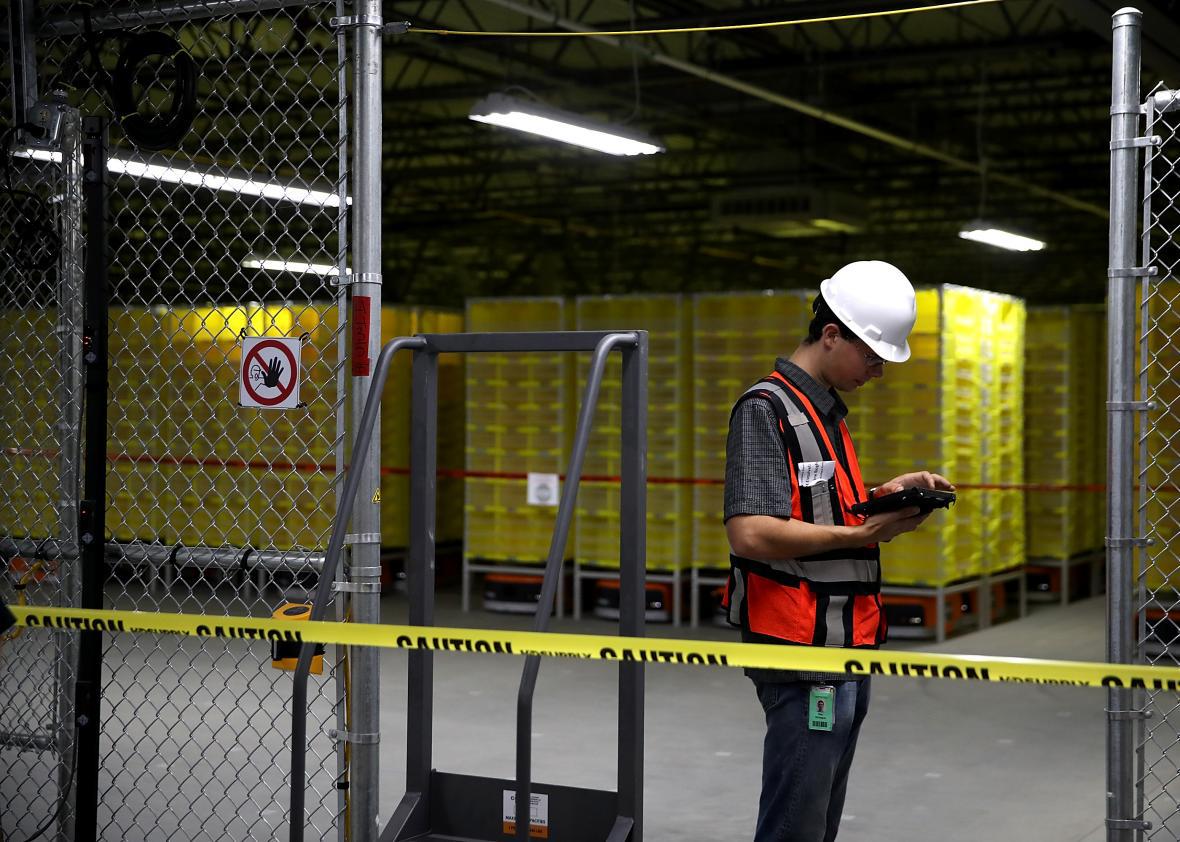
Justin Sullivan/Getty Images
Are fulfillment centers the new steel mills? That’s a question suggested by a feature in Sunday’s New York Times.
The story about the warehouses, which e-commerce companies use to ship goods to customers, proposes they may be an alternative for the growing number of people who can no longer find stable work at places like steel mills, factories, and mines that used to sustain communities outside of big cities.
Reporter Natalie Kitroeff writes that these warehouses “have fueled a boom for workers without college degrees and breathed new life into pockets of the country that had fallen economically behind.”
Companies like Amazon and Walmart have produced hundreds of thousands of jobs for people looking for manual labor since 2010, according to the Times story.
Does this mean that e-commerce is a salve for the decline of career opportunities in the ailing steel industry, or even the broader unemployment glut in the wake of the economic collapse?
Kitroeff raises some convincing points in favor of the labor shift. She notes that warehouse employment in the two counties encompassing Bethlehem, Pennsylvania, an area that formerly relied on steel, has risen from 5,200 to 15,200 in the last seven years. In Kenosha, Wisconsin, where auto plants used to provide many jobs, the number rose from 250 to 6,200 in the same span of time.
The argument then is that there is a happy marriage between the excess of people looking for jobs and the growing demands of the tech industry’s expansion throughout the nation. Plus, it’s often convenient for warehouses to be closer to the customers they’re serving. A single warehouse built by a titan like Amazon can employ more than 2,000 people, and Amazon has in fact announced plans to hire 120,000 people by year’s end. The proliferation of warehouses has led to immense growth in certain areas. As the Times piece notes, “the Lehigh Valley [in Pennsylvania] has grown faster than any other market in the country over the last five years.”
The areas that see the most growth, though, are largely located near interstate highways and population centers. It’s unclear if communities farther away from those constellations will see the benefits of this expansion, too.
And even if there is a new wave of jobs across the country, the workplaces themselves can be punishing environments. The Times noted in 2015 that the Amazon was keeping ambulances outside of warehouses due to the excruciating heat and intense pace. Surveillance systems monitoring employee productivity add an Orwellian tinge to the vibe. Shame tactics are also common, such as publicizing names of people fired for stealing to other employees.
Moreover, automation could threaten the model. Kitroeff writes of the growing use of machines with sophisticated software and censors that can perform some conveyor belt tasks. For the time being, though, robots haven’t completely taken over. A manager for one of the warehouses notes that a lot of machines still require human operators.
Experts from MIT predict that factories will begin to have less than twenty humans working in them by 2034. If that’s the case, it’s hard to see why fulfillment centers won’t also feel the squeeze.